Magazine all about Fracking
Fracking or Hydraulic Fracturing
Fracking, or hydraulic fracturing, is an unconventional method of extracting oil and gas that requires vertical and horizontal drilling at great depths. The first commercial hydraulic fracturing was achieved as recently as 1998. Fracking is a very controversial technology since it prolongs the use of fossil-fuel hydrocarbons and the introduction of additional quantities of CO2 into the atmosphere, and requiring a large amount of water. A greater greenhouse gas emissions (GHG), greater global warming and more intense climate change expected. All this goes in a direction contrary to the Paris Agreement. It is worrisome that countries that practice fracking or are preparing for it, hoping to achieve their energy self-sufficiency, are also committed to reducing their GHG emissions. It is a contradiction that glimpses a complex panorama and possibly will make it difficult the next actions and negotiations that will have to realize from now until 2020, year in which enter into force the Agreement of Paris and will correspond to put it in practice.
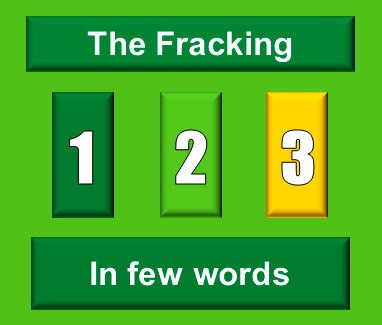
The fracking fever and the París Agreement
The trend indicates that soon many countries could enter the club of non-conventional hydrocarbon producers. Some of these nations have never produced gas or oil, but they have large reserves of shales. However, not all of these are technically recoverable and not all of them have the quality of the products to satisfy the markets. Although all are signatories of the Paris Agreement, if the scenario of incorporating new players to the hydrocarbon market occurs, the world could lose the battle against climate change.

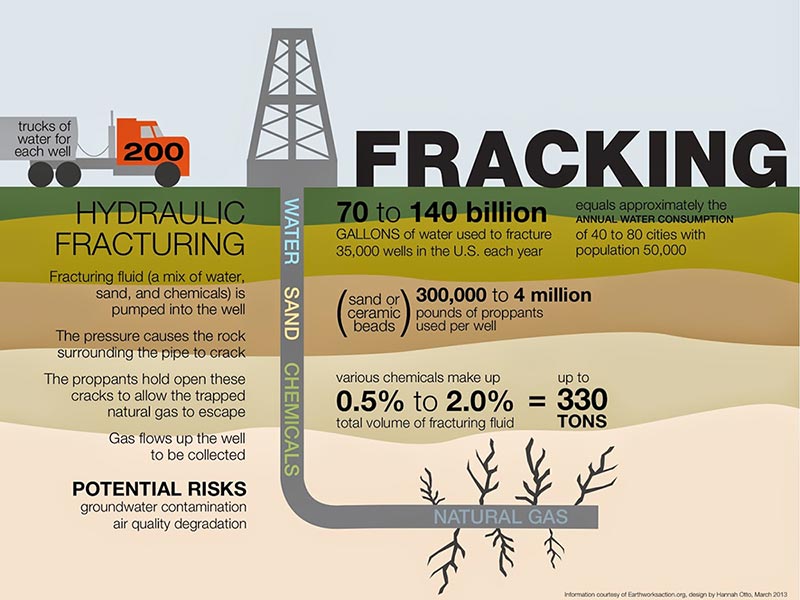
Source: Gove Online
Hydraulic fracturing, or rock stimulation technology, consists of making a vertical drilling to reach the layer of shale rocks, at depths of 1000, 3000 and up to 5000 meters. At this level, horizontal drilling begins, which extends up to 3000 meters. Then a mixture of water, sand and chemical additives is injected at very high pressure. At the moment when the resistance of the rock is overcome, its fracture occurs, which is done in a controlled manner at the bottom of the well. The force of the water causes cracks in the core of the rock and touches the sand the function of keeping cracks open so that the gas or oil can flow to the surface by natural upwelling.
Fracking explained: opportunity or danger
How does fracking work?
The hazard of fracking

Source: Pinterest
Products obtained with fracking
Shale gas
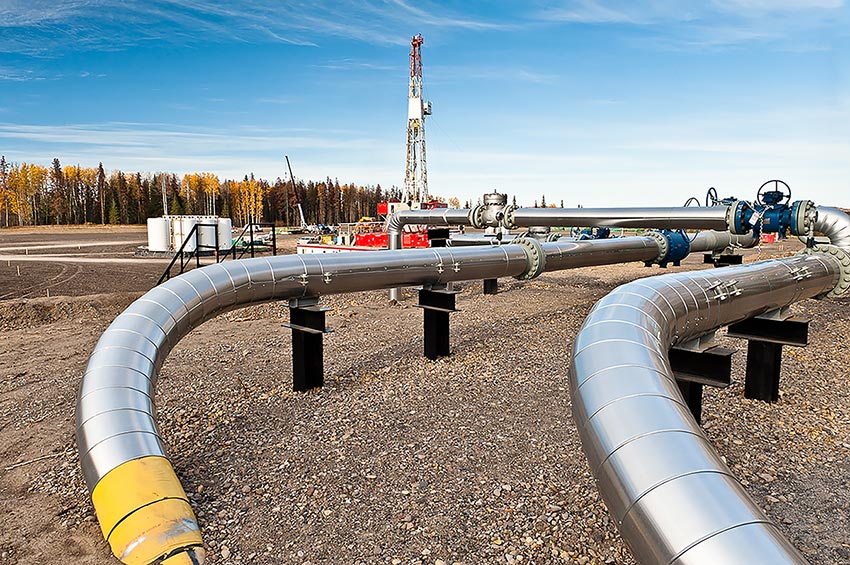
Source: Capital Radio
Shale oil

Source: bulktransporter.com
What is slate or shale rock?
The slate or shale is a rock of low permeability, which as it is formed traps the hydrocarbons. To extract the gas, the rock is fractured at very high pressure by a mixture of water, sand and chemicals.
What is shale gas?
The shale gas is natural gas embedded in deep rock formations with low permeability. Therefore, to exploit it requires complex extraction techniques such as fracking.
Countries with higher reserves of shale fuels
There are about 45 countries with proven or probable reserves of shale, but not all are exploitable, some for technical reasons and others for the low quality of hydrocarbons
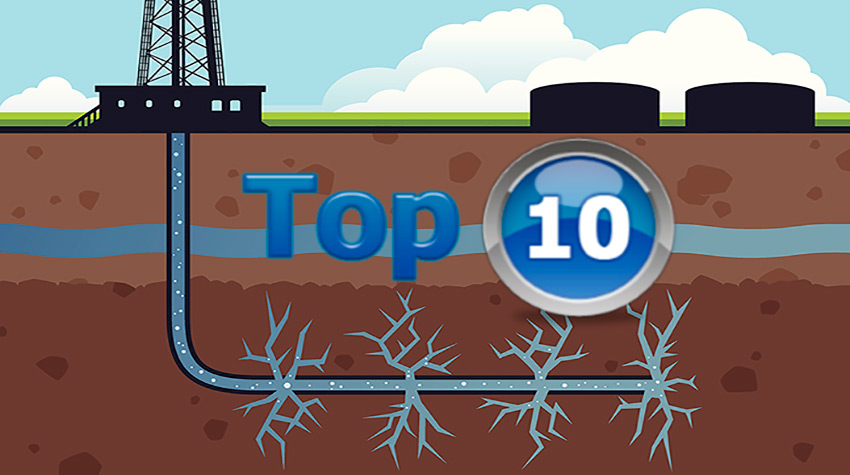
| SHALE GAS (TCF) | SHALE OIL (BBLS) | |
| China 1115 | Rusia 78 | |
| Argentina 602 | EE UU 58 | |
| Argelia 707 | China 32 | |
| EE UU 665 | Argentina 27 | |
| Canadá 573 | Libia 26 | |
| México 545 | Australia 18 | |
| Australia 432 | Venezuela 13 | |
| Sudáfrica 390 | México 13 | |
| Rusia 285 | Paquistán 9 | |
| Brasil 245 | Canadá 9 |
Technically recoverable resources are indicated. TCF: Trillions of cubic feet BBLS: Billions of barrels of crude oil
Figures for the year 2013. Source: http://www.ypf.com/energiaypf/paginas/que-es-shale.html
Countries that use fracking or are trying it
Only 4 countries produce shale gas
or shale oil commercially
Estados Unidos / China
Argentina / Canadá
Countries that are trying
fracking at this time
México
Colombia
Countries that could use fracking in the future
Rusia / Argelia
Countries that have recently lifted the ban on fracking
Australia
The Reuter agency reported, on 04-16-2018, that “the moratorium on fracking in the Northern Territory will be lifted, with new strict laws before exploration or production can occur,” according to statements by Prime Minister Michael Gunner. The announcement raised hopes for the industry to end fracking bans in Australia, where the process has become a hot spot between a national government desperate to quell rising gas prices and environmental opposition.”
United Kingdom
According to news on 05-17-2018, London announced a plan to accelerate fracking developments through “fast track” planning, designed for private companies. According to one study, more than 6,000 hydraulic fracturing wells are needed to halve gas imports from the United Kingdom. If a consultation on shale gas exploration is accepted as “permitted development”, companies could drill exempt from planning permission, environmental impact assessment or approval from local governments.
London changes the rules of the fracking game
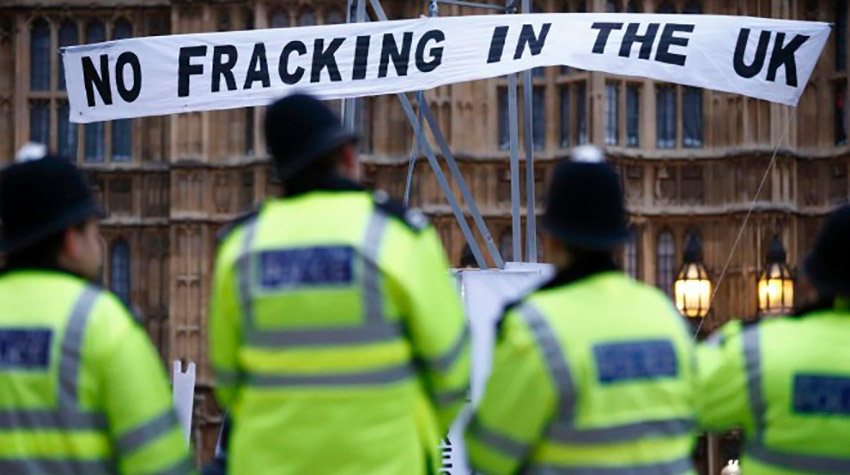
Source: Diario Río Negro
Fracking in the UK: what are the big issues?
South Africa
The EFE agency, dated 03-30-2017, reported that the South African government gave the green light to the use of fracking in the “emblematic Karoo desert”, with an area of 400 thousand km2, from where it hopes to extract more than 1, 4 trillion cubic meters of shale gas. Early in 2018 Cape Town announced that due to the severe drought it was close to becoming the first city on the planet to run out of water. In the end, with the arrival of the rains, there was no so-called “zero day”. In view of the recurrent droughts it will not be easy for South Africa to continue with its plans, since fracking requires billions of tons of water.
Countries or zones where fracking is banned
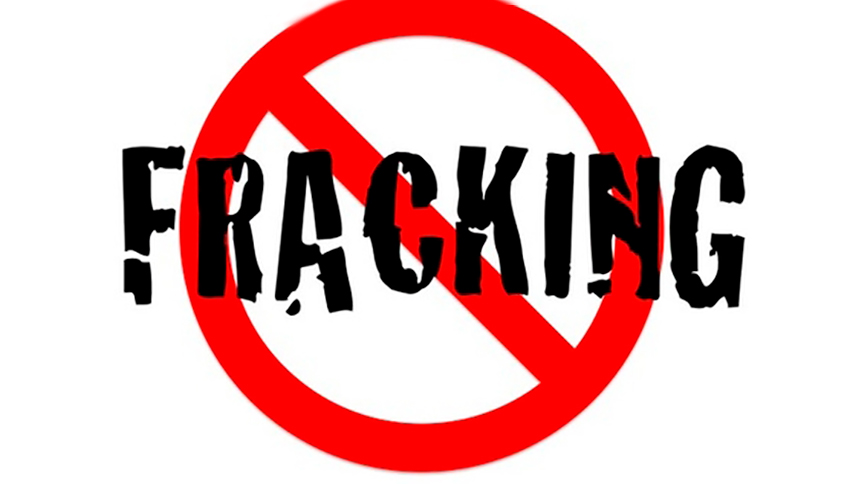
France, Bulgaria, Germany, Czech Republic, Switzerland, Austria, Northern Ireland, Italy, Republic of Ireland.
In the United States, the state of Vermont and the cities of New Jersey and New York.
In Spain, the autonomous communities of Cantabria and La Rioja and the municipality of Burgos.
Is shale gas different from natural gas?
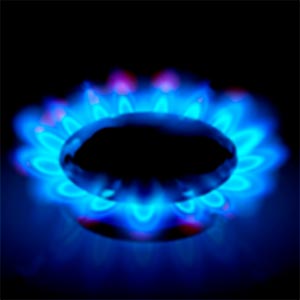

Shale gas is equal to natural gas
***
Shale oil is similar to conventional oil
Source: Tarifasgasluz.com
Main applications of natural gas
Natural gas is a fossil fuel rich in methane, a greenhouse gas 23 times more powerful than CO2, although with a concentration 220 times lower in the atmosphere. It will not be easy to dispense with its use due to its wide applications in the home, commerce and industry.
In the internal combustion vehicles
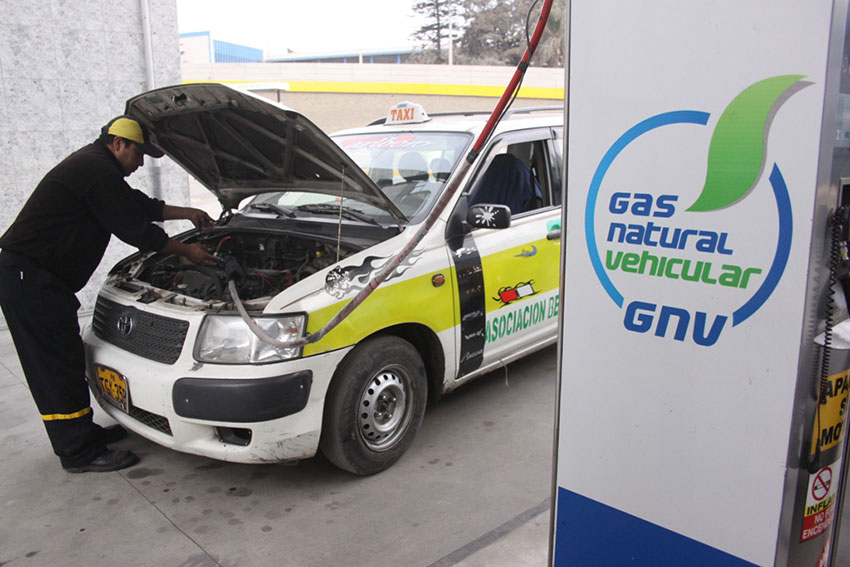
Source: Nitro.pe
In the kitchen
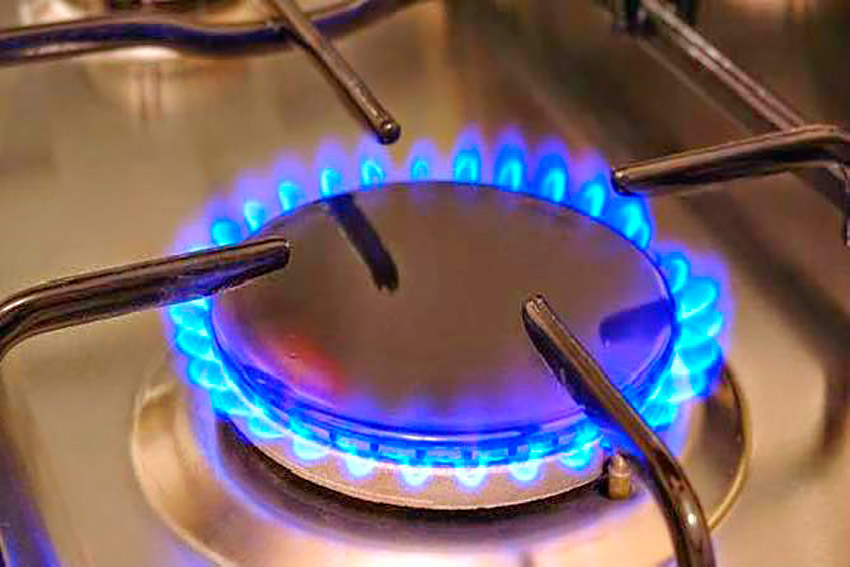
Source: gasopedia.net
In the water heaters
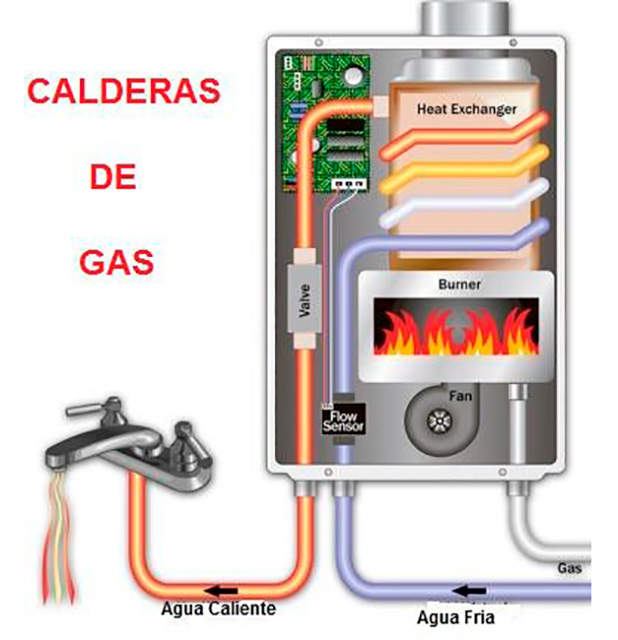
Source: AreaTecnologia.com
In home, commercial and industrial heating

Source: Quim Service
The journey of natural gas
Natural Gas
When fracking was used for the first time
Injections in the subsoil to extract oil date back to 1860, on the east coast of the United States, through the use of nitroglycerin. In 1930 acids were used instead of explosives. In 1947, studies began on the use of water, a method that start to be applied industrially in 1949 by the company Standard Oil. Finally it was the Mitchell Energy, the company of George P. Mitchell, considered the father of the fracking, which achieved the first commercial hydraulic fracturing, in 1998.
The father of fracking
George P. Mitchell is considered the father of fracking. According to an article in The Economist, published in August 2013, a few days before his death, “Mitchell was convinced that the immense reserves trapped in shale rock well below the surface could be released.”

Source: Emol.com
George P. Mitchell. 1919-2013
United States, from importer to exporter?
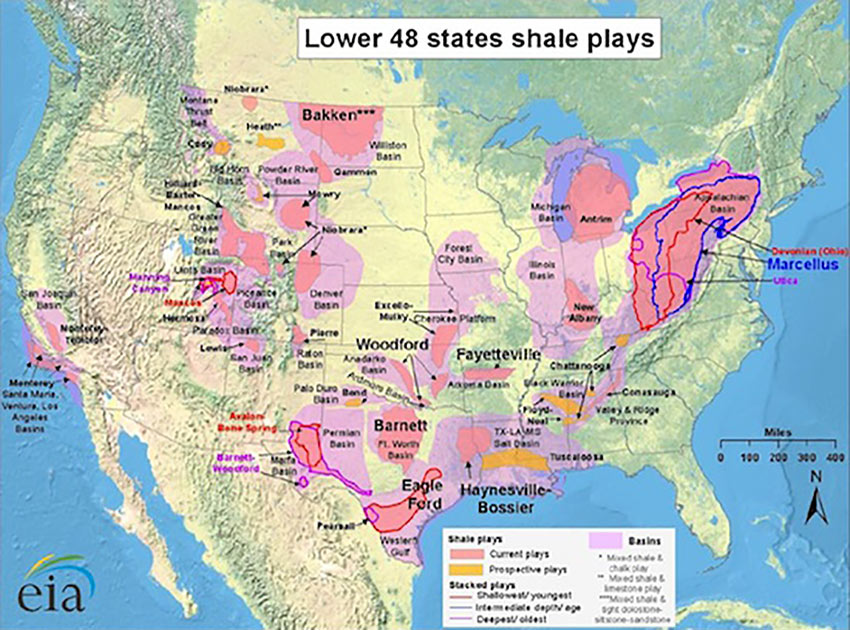
Source: EIA
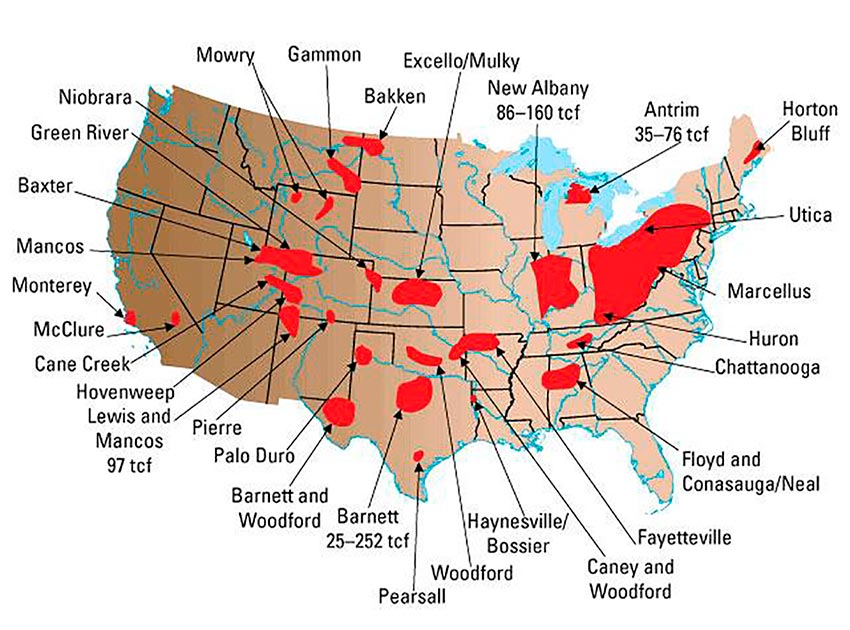
Source: Revista Mercado
The International Energy Agency (IEA) points out that the United States will become the world’s largest oil producer in 2018 thanks to the “extraordinary” growth of unconventional oil (shale). “The US will soon surpass Saudi Arabia’s production, and by the end of this year, it could even overtake Russia to become the global leader,” the IEA says.
The threats of fracking: some global and other local

Fracking and climate change

Fracking and pollution

Composition: SGK-PLANET
The global threat: will fracking affect the Paris Agreement?
The article “The Dark Side of America’s Rise to Oil Superpower” by Bloomberg magazine, reveals the “dark side” of the growth of the United States as an oil-producing power, since its energy independence would directly affect life on the planet.
The trend seems to indicate that in the near future other countries could venture into the depths of their soils, betting to join the club of countries with energy independence. They are nations that signed the Paris Agreement, committing to the substitution of fossil fuels for clean energy, and thus meet the goal of reducing the global temperature increase to less than 2º C by the end of the century.
How are the two actions compatible? Will the fracking fever affect the Paris Agreement? Two questions that remain in the air.
The local threat: fracking and environmental pollution
Soil pollution
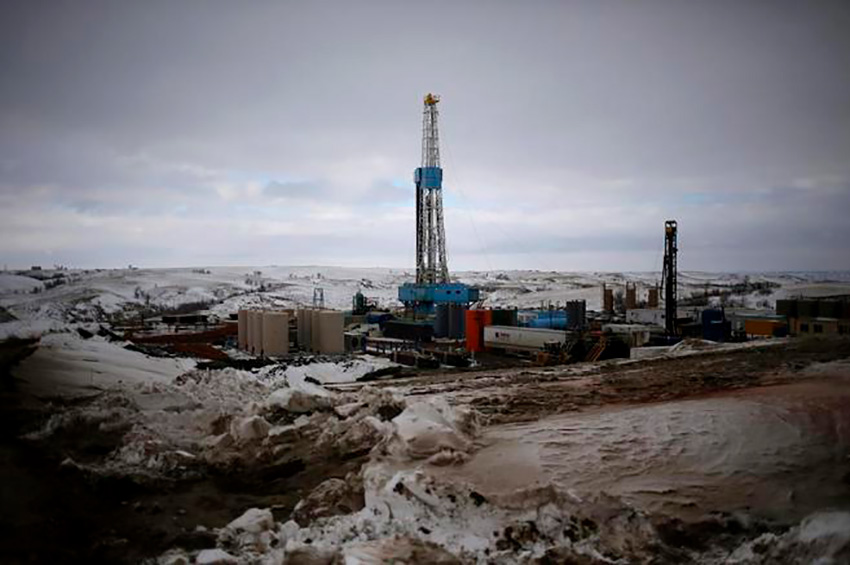
Source: El Mundo
The Spanish media Eldiario.es reported on 05/30/2015 that “The Agency for Chemical Substances of the European Union has recognized that it lacks control over the products used for hydraulic fracturing” or about its dangerousness. Many of these substances remain in the soil and can contaminate the aquifers and endanger populations that supply water from them.
Aquifers pollution
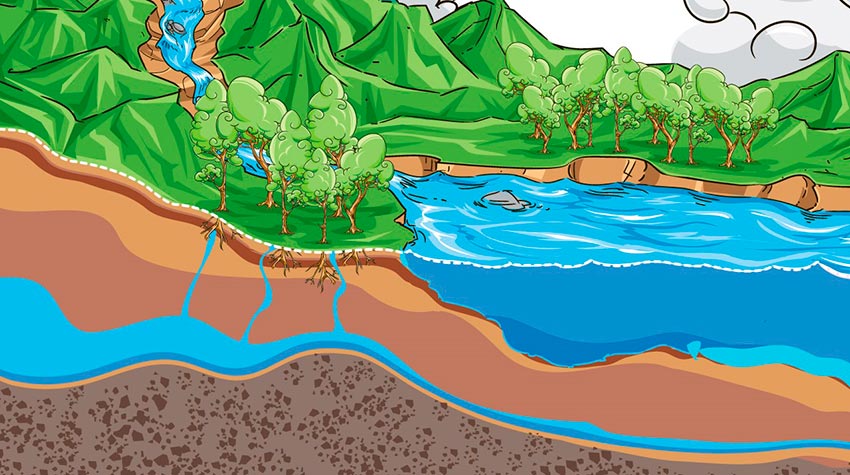
Source: Urgente24
What are aquifers?
An aquifer is a volume of water that lodges below the surface of the Earth. It is found on all five continents. The total mass of the aquifers is higher than the visible water of lakes and rivers. The vital liquid of the subsoil is an important resource, since it provides a third of the world’s drinking water. This explains the concern of environmental groups for the risk of their contamination in the deep perforations of fracking.

Source: Ministerio de Ambiente y Desarrollo Sostenible – Colombia
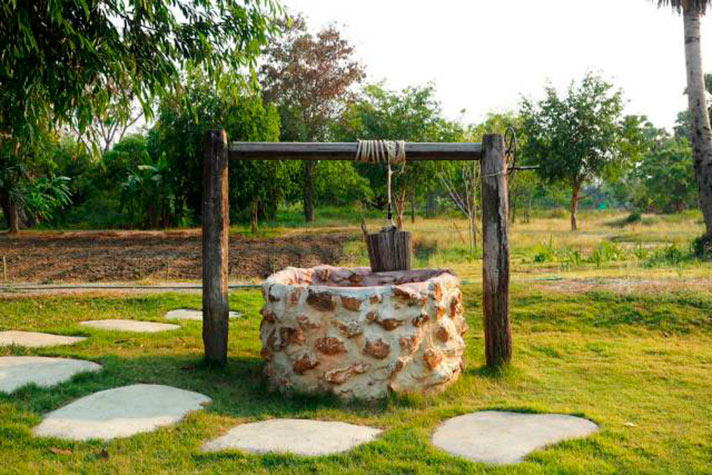
Source: Las Vegas Review-Journal
Fracking and diseases
A study conducted in Colorado, United States, published in the journal Endocrinology, suggested that fracking operations use substances that can result in alterations of the hormonal balance related to infertility and cancer, due to the contamination of surface water in aquifers.
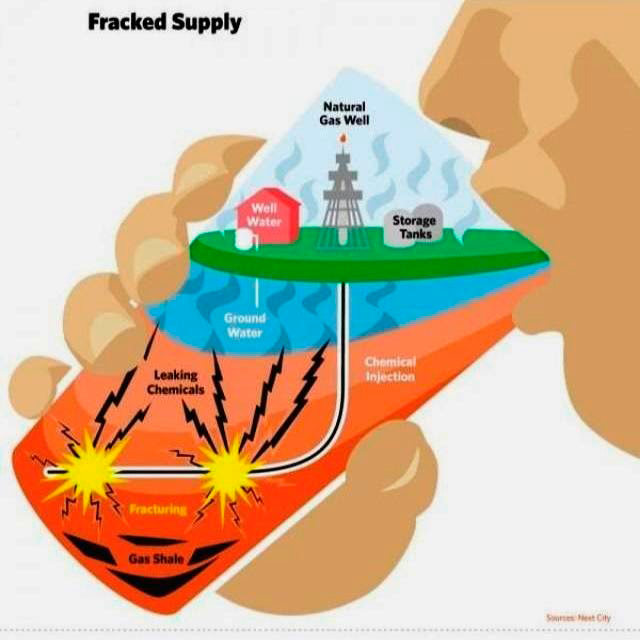
Source: Econcientiza
All this complex paraphernalia to perform fracking
To drill a fracking well you need a complex logistics that involves drilling, water, sand, chemicals, cement, machinery, transportation, etc. Each well platform may require several thousand trips to transport machinery, tools and cleaning equipment.
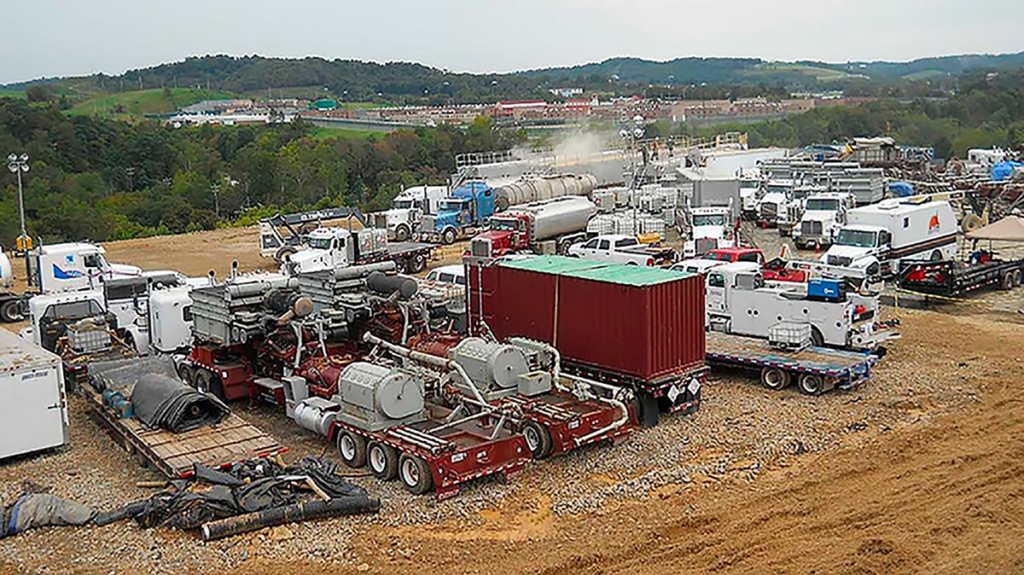
Source: Wikipedia

Source: Portal del Petróleo
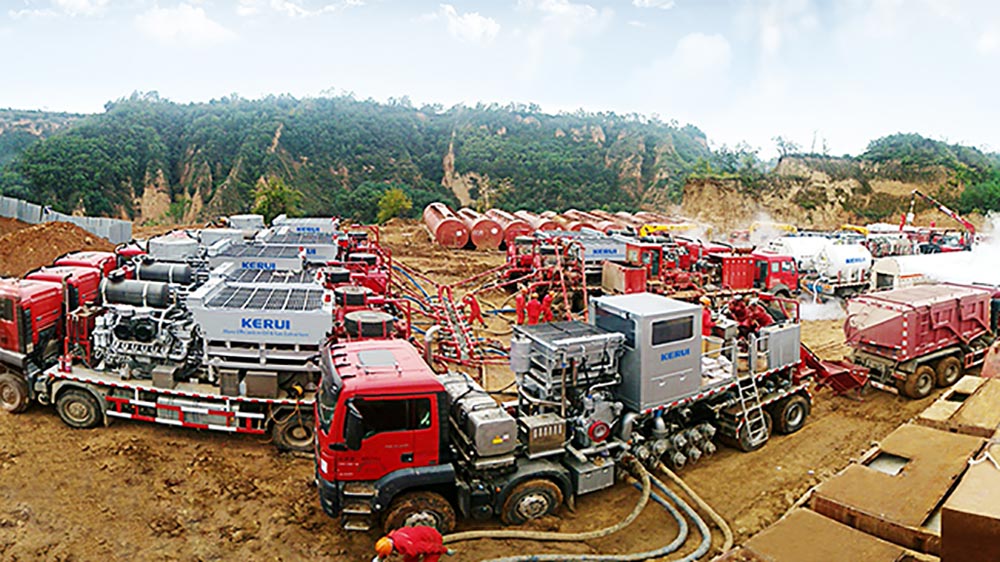
Source: Kerui Petroleum
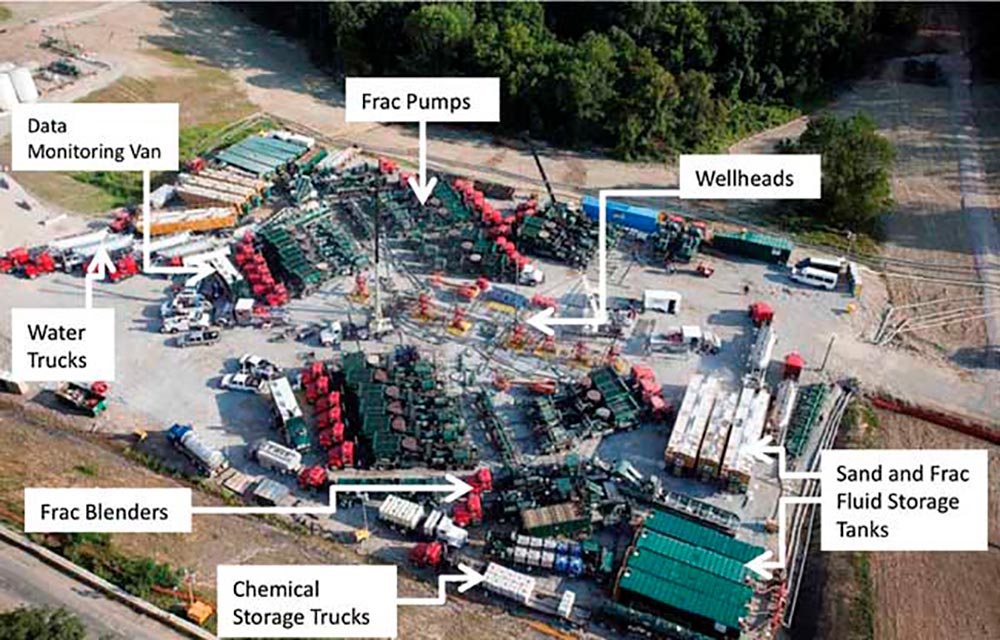
Source: Wiring Source
Arguments in favor
Counterarguments
They said that the technique has no greater risks than those of others used by the industry. They insist on the economic benefits of the huge volumes of hydrocarbons only extractable through fracking. They argue that in cases where contamination has occurred it has been due to bad practices, such as failure in the drilling process, the cementing of the wells or inadequate treatment of the wastewater, but not the technology itself.
They argue that the fracking boom is contrary to the Paris Agreement, sending huge amounts of CO2 into the atmosphere through the use of fossil fuels. They denounce the environmental impact of hydraulic fracturing, such as the contamination of aquifers, soil, water and air, high water consumption, the return of gases and chemicals used to the surface, as well as likely effects on health. They also point to cases of increased seismic activity.
A mystery about the chemicals used
In the United States until 2011, the components had been kept secret
used in the fracking process, for “commercial reasons”

Source: Prevencionar
“In the United States, about 750 chemical compounds are used as additives in hydraulic fracturing, according to a report presented at the American Congress by the Democratic Party, published in 2011, after being kept secret for “commercial reasons”. (Wikipedia).
The main additives are: hydrochloric acid, acetic acid, citric acid, sodium chloride, polyacrylamide, ethylene glycol, borate salts, sodium carbonates, potassium, glutaraldehyde, and guar gum.
A day in a fracking camp
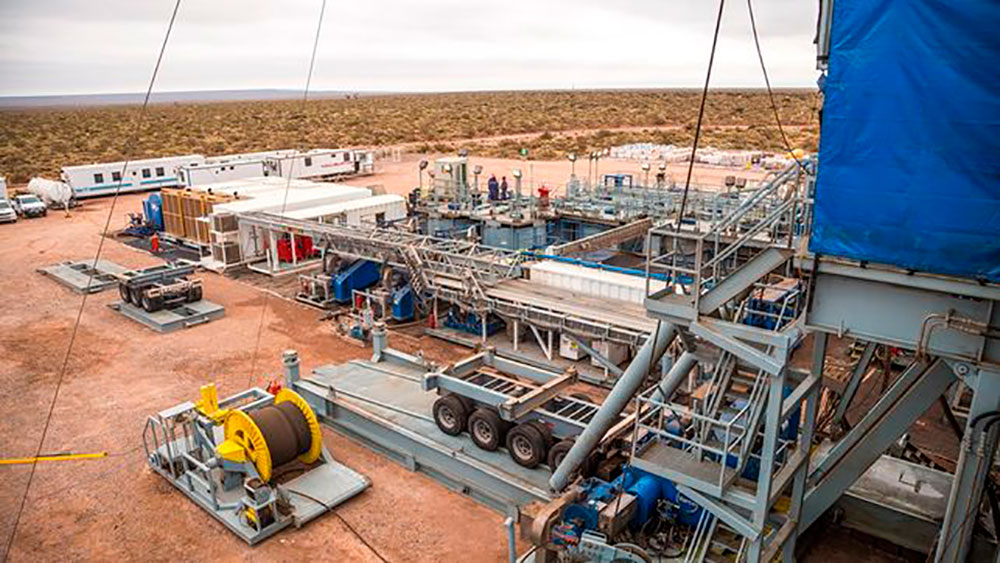
Source: Eldiario.es
Interesting data obtained from a report made in 2015 by the Spanish media Eldiario.es, in Vaca Muerta, Argentina, the second country with the most reserves of shale gas in the world and the fourth in oil
* At Camp Loma Campana, in Vaca Muerta, there are some 4,000 workers involved in the operation: operators of drilling and stimulation equipment, well walkers, road builders, environmental supervisors, engineers and drivers.
* In a well you work 24 hours, because it is “too expensive to have it stopped.” The workers take 12-hour shifts for 14 days in a row and then rest seven.
* In Loma Campana, the state oil company YPF, Yacimientos Petrolíferos Federales, works in partnership with Chevron.
* Vaca Muerta is the first commercial shale oil deposit in the world outside of North America, with a production of about 43,000 barrels per day in 2015.
* A conventional well could cost about two million dollars, while an unconventional one cost almost seven million in 2015 and eleven million in 2011. The profitability goal for YPF was then down to five million. How? “Making more and more wells”.
* The drilling tower is 54 m. High. Inside, the workers control the work through monitors. They must drill 3,000 m. down to reach the rock of Vaca Muerta, which has 400 m. wide against 30 m. of the United States.
* The drill bit is 6 inches in diameter. You start with 12 in the first 350 m. and it gets smaller as it goes deeper into the subsoil.
* Once the hole is made it is intubated with steel pipes and sealed with cement “to avoid any type of filtration”.
* The perforation lasts almost a month, depending on the complications that may arise. In the case of a horizontal well, when a certain level is reached, the drill goes turning to the side, drawing a curve and advances about 200 m. to make the most of the potential of the rock.
* Once the task is finished, it is not necessary to disarm and reassemble the tower because it “walks” to drill another well. The speed of translation is 10 m. per hour.
* The wells should be about 350 m. to avoid problems or leaks during stimulation.
* When you reach this stage, the activity multiplies. There are up to a hundred people in the well, and there are 15 to 20 trucks with motors connected to hoses, ready to introduce a mixture of water, a special sand and chemicals at very high pressure into the well.
* The noise is deafening. Engineers measure what happens below with sensors placed in nearby wells. “We have seismographs with which we see how formations react to stimulation.”
* The stimulation is repeated for four days, between 10 and 15 times, depending on the size of the well. Finally, the area is sealed with a special material and reapplied in another area.
* The fissures that are generated drain to the pipes, where oil or gas comes out, which is sent directly by pipes that travel tens of kilometers to the plants where the fuels are separated and stored.
* In total, it is two months of work 24 hours to put a well in operation.
* During the first three years there is usually “natural upwelling”, then you must use a traditional pumping device.
* Once in operation, a well can produce for three decades. But all this is not known for sure, because no well is old enough to prove it.

